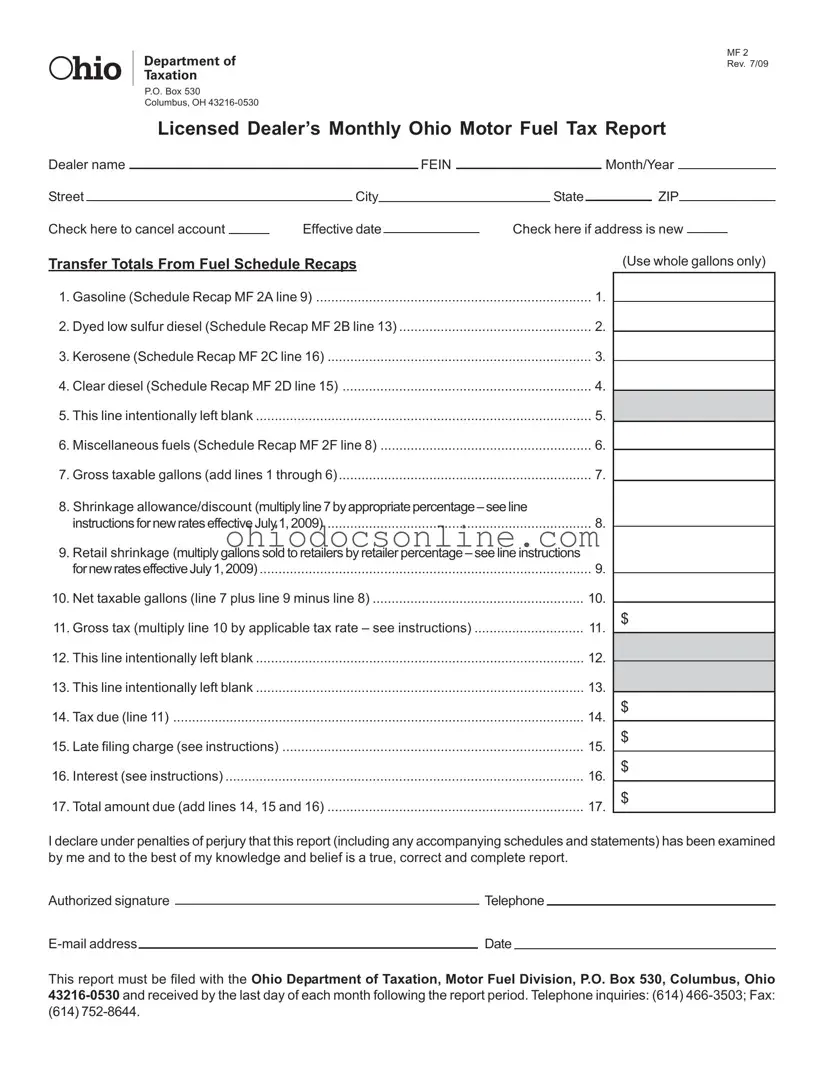Ohio Mf 2 Template in PDF
The Ohio Mf 2 form is a monthly report that licensed dealers must submit to the Ohio Department of Taxation to account for motor fuel tax. This form captures essential information about the dealer's fuel sales, including various fuel types and the corresponding tax due. Accurate completion and timely submission of this form are critical for compliance with state tax regulations.
Open Editor
